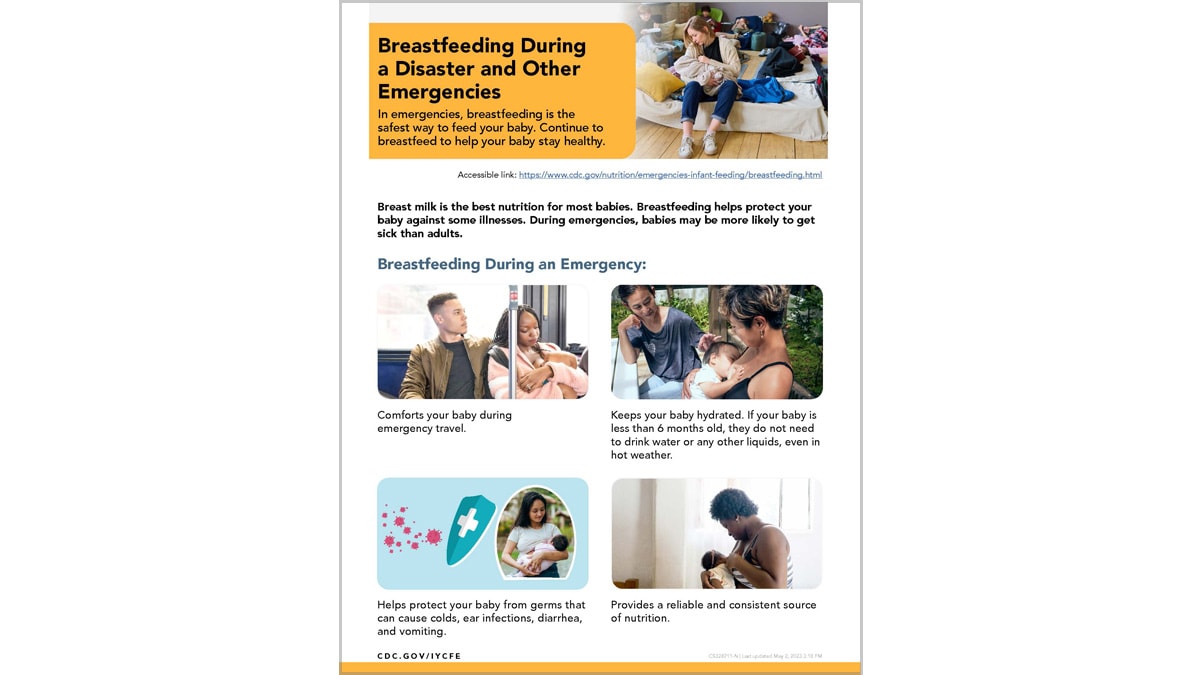At a glance
In emergencies, breastfeeding is the safest way to feed your baby. Continue to breastfeed to help your baby stay healthy. Breastfeeding helps protect your baby against some illnesses. During emergencies, babies may be more likely to get sick than adults.

Breastfeeding during an emergency




If your baby is breastfeeding well
You do not need to also give infant formula because:
- Formula can make babies feel full and stop breastfeeding.
- Powdered formula can increase your baby's exposure to harmful germs.
- Water might not be safe to mix with powdered formula and clean bottles and nipples.
- Your breast milk supply can go down if you feed your baby formula and breastfeed less often.



